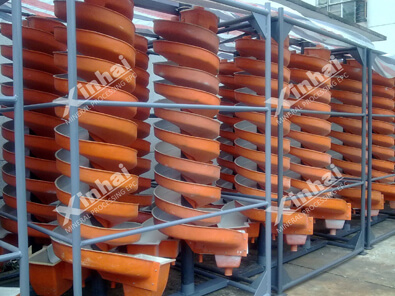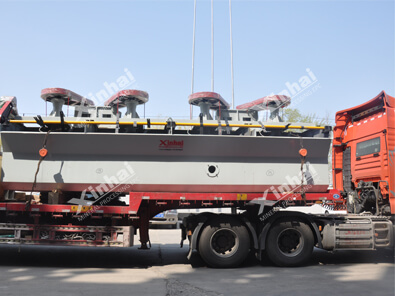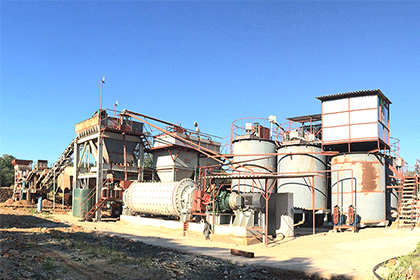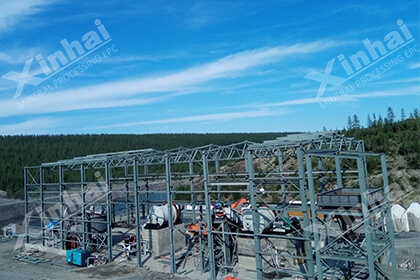Choosing the Best: A Comparative Study of Iron Removal Processes for Quartz Sand
 Laura
Laura
 Nov 22, 2023
Nov 22, 2023
 734
734
If you want to know more details about equipment, solutions, etc, please click the button below for free consultation, or leave your requirements!

( Iron removal from quartz sand - flotation machines in the plant )
Iron impurities in quartz sand can significantly impact its quality and suitability for various applications. Therefore, it becomes crucial to remove iron from quartz sand to enhance its purity and value. However, with multiple iron removal processes available, it becomes essential to compare and evaluate them to determine the most efficient, effective, cost-effective, and environmentally friendly method. In this article, we will delve into a comprehensive comparative analysis of various processes used for iron removal from quartz sand, considering their efficiency, effectiveness, cost, and environmental impact.
01Physical Separation Methods
BackPhysical separation methods involve the use of physical properties such as density, size, and magnetic susceptibility to separate iron impurities from quartz sand. Techniques such as magnetic separation, gravity separation, and sieving can be employed. Magnetic separation utilizes magnetic properties to attract and remove iron particles, while gravity separation relies on differences in density to separate particles. Sieving involves the separation of particles based on size using mesh screens. This method is relatively cost-effective but may have limitations in terms of efficiency and selectivity.

( Shaking table for iron removal from quartz sand )
02Chemical Leaching Processes
BackChemical leaching processes utilize chemical agents to dissolve or react with iron impurities, allowing their removal from quartz sand. Acid leaching, in particular, is commonly employed, where acids like hydrochloric acid or sulfuric acid are used to dissolve iron oxides. This method can be highly efficient in removing iron, but it may involve high chemical consumption and require proper waste management to mitigate environmental impacts.
03Electrochemical Methods
BackElectrochemical methods involve the application of electric current or potential to induce reactions that promote iron removal from quartz sand. Electrocoagulation and electroflotation are two common techniques used in this context. Electrocoagulation uses sacrificial anodes to generate metal hydroxide coagulants that bind to iron impurities, allowing their subsequent removal. Electroflotation involves the generation of gas bubbles through electrolysis, which float the iron particles to the surface for removal. Electrochemical methods can offer high efficiency and selectivity, but they may require specialized equipment and careful control of operating conditions.
04Flotation Processes
BackFlotation processes utilize the differences in surface properties between iron impurities and quartz sand particles to separate them. Froth flotation is a widely used technique in which air bubbles are introduced into a suspension of quartz sand and chemicals called collectors. The collectors selectively attach to the iron particles, allowing their removal via flotation. Flotation processes can be effective in removing iron, but they may involve complex chemistry and require optimization for specific quartz sand compositions.

( Flotation equipment for iron removal from quartz sand )
05Advanced Oxidation Processes
BackAdvanced oxidation processes (AOPs) are advanced and highly effective techniques that utilize powerful oxidants to degrade and remove iron impurities from quartz sand. Methods such as ozone oxidation, hydrogen peroxide oxidation, and photocatalysis (e.g., with titanium dioxide) can be employed. AOPs can be highly efficient and environmentally friendly, as they often result in the complete oxidation and mineralization of iron impurities. However, these processes may require specialized equipment and careful management of reactant concentrations.
06Comparative Evaluation
BackTo determine which iron removal process reigns supreme for quartz sand, a thorough comparative evaluation is essential. The efficiency of each method in removing iron should be assessed by considering factors such as iron removal rate, final iron concentration achieved, and selectivity towards iron impurities. Effectiveness refers to the ability of the process to consistently deliver iron-free quartz sand within desired purity specifications.
Cost-effectiveness is another crucial aspect to consider. It involves evaluating the capital and operational costs associated with each process, including equipment, reagents, energy consumption, and waste management. A cost-benefit analysis should be performed to identify the most economically viable option.
The environmental impact is an important consideration in today's sustainability-focused world. The consumption of chemicals, energy usage, waste generation, and emissions resulting from each process must be evaluated. Processes with lower environmental footprints and minimized adverse effects should be prioritized.
07Conclusion
BackIn conclusion, the removal of iron from quartz sand is a critical process to enhance its purity and value. A comparative analysis of various iron removal processes, considering their efficiency, effectiveness, cost, and environmental impact, is essential. Physical separation methods, chemical leaching processes, electrochemical methods, flotation processes, and advanced oxidation processes are among the techniques available. Through a comprehensive evaluation, the most efficient, effective, cost-effective, and environmentally friendly method can be determined. By selecting the superior iron removal process, industries can ensure the production of high-quality, iron-free quartz sand for a wide range of applications.
Remember to consult with experts and conduct further research to choose the most suitable iron removal process based on specific requirements and conditions.
 +86 18716000713
+86 18716000713 xlyin@xinhaimining.net
xlyin@xinhaimining.net




 Message
Message Chat Now
Chat Now




















